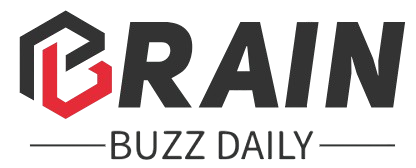In today’s fast-paced digital landscape, eporer has emerged as a flexible solution for organizations that need to unify data, streamline workflows, and deliver measurable outcomes. Many technology vendors, startups, and institutional teams use the term eporer to describe platforms that combine integration, automation, analytics, and privacy controls into a single, manageable environment. This guide explains the core concept, highlights essential features and benefits, and walks you through practical steps to evaluate and adopt the platform in real-world settings. It’s written to be clear and actionable so you can decide whether this approach fits your organization’s needs.
What is eporer?
At its heart, eporer refers to a configurable, modular platform architecture that helps organizations process information, automate routine tasks, and present insights through intuitive interfaces. Rather than relying on a dozen point-to-point integrations, this model focuses on interoperability through standard connectors and central governance. That means teams can integrate legacy systems, cloud services, and departmental tools while preserving consistent rules for access, retention, and reporting. The net effect is reduced operational friction and faster time from data to decision.
Core features of eporer
Typical eporer implementations follow a predictable set of capabilities: a modular design that supports plug-in connectors; a robust data engine for ingesting and normalizing streams; an automation layer for orchestrating processes; and dashboards that make analytics and reporting easy for non-technical users. Built-in monitoring, alerting, and audit trails help operators spot and remediate issues quickly, while policy controls ensure that governance scales with adoption. The platform mindset also makes it simpler to add new services — for example, a new CRM, billing engine, or scheduling system — without extensive rework.
Benefits businesses gain from eporer
Organizations that adopt eporer often report measurable gains: faster time to insight, reduced integration costs, higher employee productivity, and improved customer experiences. Centralized governance eliminates repeated reconciliations and reduces errors that arise from siloed systems. By making data flows transparent and auditable, teams can meet compliance needs more easily and respond to regulatory requests with confidence. When paired with a clear adoption plan, the architecture reduces technical debt and shortens the path to value for analytics and automation initiatives.
Common use cases for eporer
The approach fits a wide array of real-world problems across sectors. In healthcare, linking appointment systems, clinical records, and analytics improves care coordination and speeds decision-making. Financial organizations use consolidated processing to monitor transactions, apply compliance checks, and generate regulatory reports with fewer manual handoffs. Educational institutions combine learning platforms and student records to identify at-risk learners and tailor interventions. Retail and logistics teams synchronize inventory, orders, and fulfillment across channels to reduce stockouts and improve customer satisfaction. The unifying need is reliable, scalable data flow and a single source of truth for cross-team workflows.
Implementation tips and considerations
Begin by mapping your data sources, key processes, and the outcomes you expect from integration. Choose a pilot use case with clear, measurable goals and limited scope to demonstrate value quickly. Pay attention to data modeling early: inconsistent field definitions and formats are the most common sources of friction. Design governance and role-based access from the start so sensitive data is protected as integrations expand. Finally, evaluate maintainability: who will update connectors, how will versioning be handled, and what visibility will you have into system health after deployment?
Security, privacy, and compliance
Security should be built in, not bolted on. Require encryption both at rest and in transit, multi-factor authentication for administrative access, and detailed audit logs for critical actions. Minimize the use of sensitive fields where possible and provide mechanisms for redaction or anonymization when data is used for analytics. Verify supplier claims with evidence — independent audits, certifications, and transparent data processing agreements are essential. When regulatory requirements apply, ensure the solution can produce the reports and retention records auditors will request.
How to evaluate whether this solution is right for you
Use a balanced scorecard that includes technical fit, operational readiness, and business impact. Check that the architecture supports your scaling needs, protocol requirements, and acceptable latency. Assess the internal skill set required for maintenance and the availability of a partner ecosystem to fill gaps. From a business standpoint, prioritize pilots that produce clear ROI within months and secure cross-functional sponsorship to drive adoption. A clear decision rubric reduces bias and helps you choose the best path: buy, build, or combine.
Adoption, pricing, and vendor models
Pricing models vary widely: subscription fees based on users or data volume, tiered enterprise packages, or open-source options that shift cost into maintenance. When comparing total cost of ownership, include integration work, training, ongoing support, and the effort needed for upgrades. Evaluate contract flexibility and exit strategies to avoid unexpected lock-in. For many organizations, a hybrid approach — commercial core with selective open-source components — balances control with time-to-value.
Future outlook and practical next steps
Expect continued momentum toward integrated platforms that prioritize automation, embedded analytics, and privacy-by-design. Standardization of connectors and more turnkey analytics workflows will shorten deployment timelines, while governance features will become more prescriptive to meet tightening regulatory pressures. Practical next steps: pick a high-impact pilot, assemble a small cross-functional team, and define one or two clear metrics that determine success. Iterate quickly, measure outcomes, and expand what works while minimizing disruption.
Frequently Asked Questions
1. What is the fastest way to prove value?
Start with a single department and a narrow use case that has measurable outcomes, such as reducing manual reconciliation or accelerating report generation. A short, focused pilot minimizes risk and delivers tangible results.
2. How long does implementation typically take?
Small pilots can launch in weeks; enterprise-wide rollouts usually take several months depending on the number of integrations and compliance requirements. Plan in phases to maintain momentum.
3. Do smaller teams benefit from this model?
Yes. Even small teams gain from standardized connectors and automation that reduce manual tasks and free staff for higher-value work. Choose lightweight deployments when resources are limited.
4. What are the top security checks to perform?
Verify encryption standards, access control mechanisms, audit logging, and evidence of independent security assessments. Ensure default configurations prioritize protection.
5. Build vs. buy — how to decide?
If proprietary needs are niche and you have development capacity, building can offer control; otherwise, buying reduces time-to-value. Use a cost-and-risk rubric that accounts for maintenance and upgrades.
Conclusion
This guide gives a practical overview of the platform approach that many organizations are now adopting to unify data, automate processes, and deliver reliable insights. By starting with a clear pilot, prioritizing governance, and measuring outcomes, teams can reduce complexity and accelerate the value of their technology investments. Use the checklists and evaluation tips here to form a pragmatic plan and move from experimentation to sustained impact.

